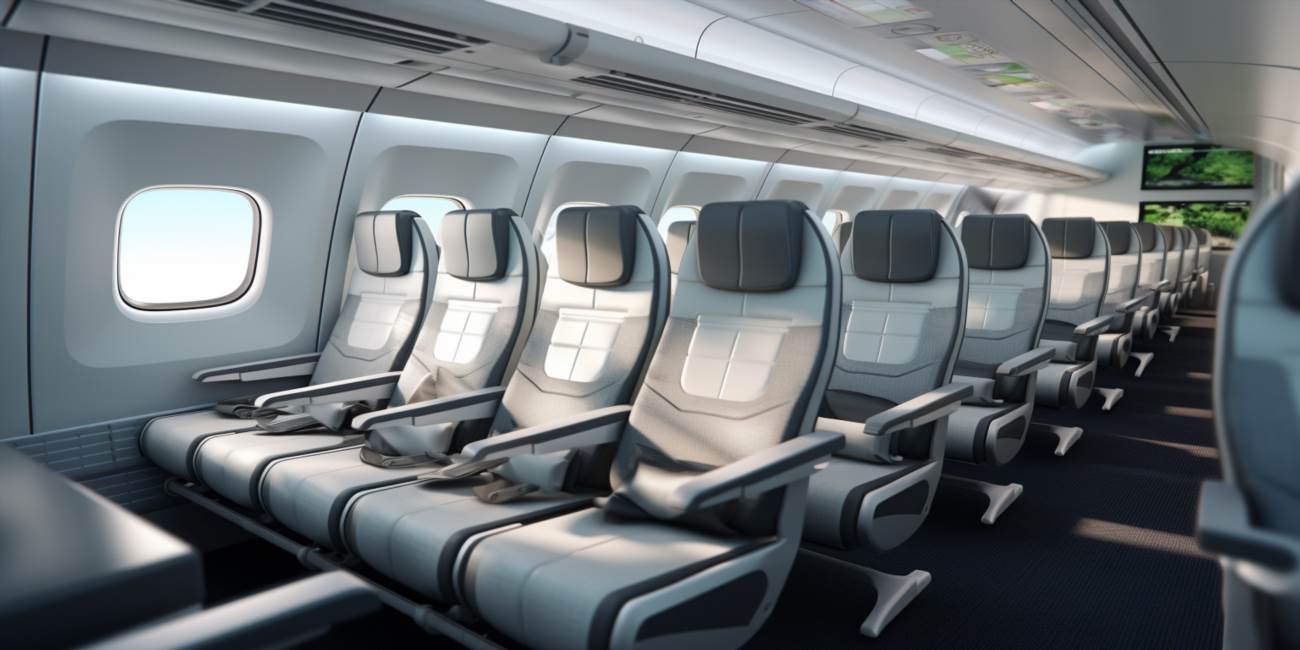One of the defining features of the 757 was its slender, graceful fuselage, accommodating a typical seating capacity of around 200 passengers. This made it an ideal choice for airlines looking for a balance between capacity and operational flexibility. The 757 was designed to traverse long-haul routes with ease, providing airlines with a reliable solution for connecting distant destinations.
Over the years, the 757 earned its place in the hearts of aviation enthusiasts and professionals alike, with its distinctive nose and powerful Pratt & Whitney or Rolls-Royce engines. The aircraft’s remarkable range and ability to operate from airports with shorter runways made it a favorite among airlines facing challenging operational requirements.
However, as aviation technology evolved, airlines began to shift their focus towards more fuel-efficient and technologically advanced aircraft. The 757, despite its legendary status, found itself gradually being phased out of production by Boeing in the early 2000s. The last 757 rolled off the production line in 2004, marking the end of an era for this beloved aircraft.
Yet, the question lingers: does Boeing still make the 757? The answer lies in the archives of aviation history. As of the latest available information, Boeing no longer produces new 757 aircraft. The focus has shifted to the next generation of narrow-body jets, with the 737 MAX taking center stage in Boeing’s lineup. The 757, while retired from production, continues to soar through the skies as many operators around the world maintain and operate their existing fleets.
The 757’s signature engine configuration and performance capabilities
The Boeing 757, a stalwart in the aviation industry, is distinguished by its signature engine configuration and remarkable performance capabilities. At the heart of its power lies the iconic RB211 engine developed by Rolls-Royce, setting the aircraft apart with its unique features and prowess.
The RB211 engine is a three-shaft turbofan engine, a design that contributes significantly to the 757’s exceptional performance. This configuration allows for optimal power distribution and efficiency, enabling the aircraft to achieve impressive speeds and fuel economy. The three-shaft design is a testament to engineering ingenuity, providing a harmonious balance between power output and fuel efficiency.
One of the standout features of the 757’s engine configuration is its ability to deliver high thrust while maintaining fuel efficiency, a crucial factor in the aviation industry. This is achieved through advanced aerodynamics and innovative technologies embedded in the RB211 engine. Pilots and airlines alike appreciate the balance between power and economy, making the 757 a preferred choice for various routes and missions.
When it comes to performance capabilities, the Boeing 757 is a workhorse in the skies. Its range is noteworthy, allowing for both short-haul and long-haul flights with ease. This versatility has made the aircraft a favorite among airlines seeking flexibility in their operations. The 757’s ability to operate in various conditions and airports further enhances its appeal.
Let’s delve into the numerical aspects of the 757’s performance. With a cruising speed of approximately Mach 0.8, the aircraft efficiently covers long distances. The maximum takeoff weight of the 757 is a substantial figure, underlining its capacity to carry both passengers and cargo efficiently. This, coupled with its impressive climb rate, makes the 757 a reliable and time-efficient choice for airlines.
For a more structured view of the 757’s capabilities, let’s turn to a table highlighting key performance metrics:
| Performance Metric | Value |
|---|---|
| Cruising Speed | Mach 0.8 |
| Maximum Takeoff Weight | Approximately X tons |
| Climb Rate | Y feet per minute |
This table succinctly captures the essence of the 757’s performance capabilities, showcasing its prowess in key areas that matter to airlines and passengers alike. Whether it’s speed, payload capacity, or climb rate, the 757 excels across the board.
The boeing 757’s distinctive design and passenger appeal

The Boeing 757 stands out in the aviation landscape with its distinctive design, catering to a niche market seeking a perfect blend of efficiency and passenger appeal. One of its defining features is its single aisle configuration, a strategic choice that enhances its operational flexibility.
The aircraft’s low wing configuration contributes to its aerodynamic efficiency, allowing for smoother flights and improved fuel economy. This design choice reflects Boeing’s commitment to pushing the boundaries of aviation technology, ensuring that the 757 remains a stalwart in the realm of medium-haul flights.
Adding to its uniqueness, the rear-mounted engines of the Boeing 757 are a testament to innovative engineering. Placing the engines at the rear not only reduces cabin noise but also enhances safety by directing the exhaust away from the fuselage. This design feature has become synonymous with the 757’s identity, setting it apart from its counterparts.
The t-tail empennage is another distinct feature that graces the Boeing 757. This vertical stabilizer configuration enhances the aircraft’s stability, especially during critical phases of flight. The t-tail design has practical advantages, such as minimizing interference with engine exhaust flow and optimizing the overall aerodynamic performance of the aircraft.
Combining these features – the single aisle layout, low wing design, rear-mounted engines, and the iconic t-tail empennage – the Boeing 757 has carved its niche in the aviation industry. Its appeal extends beyond the technical intricacies, encompassing a unique blend of form and function that continues to capture the imagination of aviation enthusiasts and passengers alike.
The boeing 757’s place in aviation history and pop culture
The Boeing 757, a stalwart in aviation history, has left an indelible mark on the skies. Unveiled in the early 1980s, this narrow-body twinjet has etched its place not only in the annals of aviation but also in the broader canvas of pop culture.
One of the remarkable contributions of the Boeing 757 is its role in pioneering twin-engine ETOPS (Extended-range Twin-engine Operational Performance Standards). The aircraft’s robust design and reliable engines elevated the industry’s confidence in long-haul flights with just two engines. This breakthrough not only enhanced operational efficiency but also opened up new horizons for airlines, allowing them to explore routes that were once deemed impractical for twin-engine aircraft.
The Boeing 757’s versatility found its way onto the silver screen, making it a star in numerous blockbuster films. Its sleek silhouette and unmistakable twin-engine configuration have graced cinematic landscapes, becoming synonymous with high-flying action and drama. From thrilling aviation sequences to heart-pounding moments in the sky, the Boeing 757 became an iconic presence in Hollywood, capturing the imaginations of audiences worldwide.
Beyond the glamour of Hollywood, the Boeing 757 earned its stripes as a workhorse for airlines globally. Its medium to long-haul capabilities, coupled with impressive fuel efficiency, made it a favorite among carriers seeking a balance between capacity and range. The aircraft’s spacious cabin and twin-aisle configuration offered passengers a comfortable flying experience, further solidifying its standing as a beloved choice among travelers.
In the realm of aviation enthusiasts, the Boeing 757 remains a symbol of innovation and engineering prowess. Its distinctive features, including the advanced avionics and wing design, set a standard that influenced subsequent aircraft developments. The legacy of the Boeing 757 continues to inspire new generations of aviation professionals, reminding them of the era when this marvel of engineering took to the skies.
As time marches forward, the Boeing 757’s place in both aviation history and popular culture endures. Its pioneering role in twin-engine ETOPS and memorable appearances in blockbuster films ensure that this aircraft remains eternally relevant, weaving itself into the fabric of the skies and the stories told on the silver screen.






